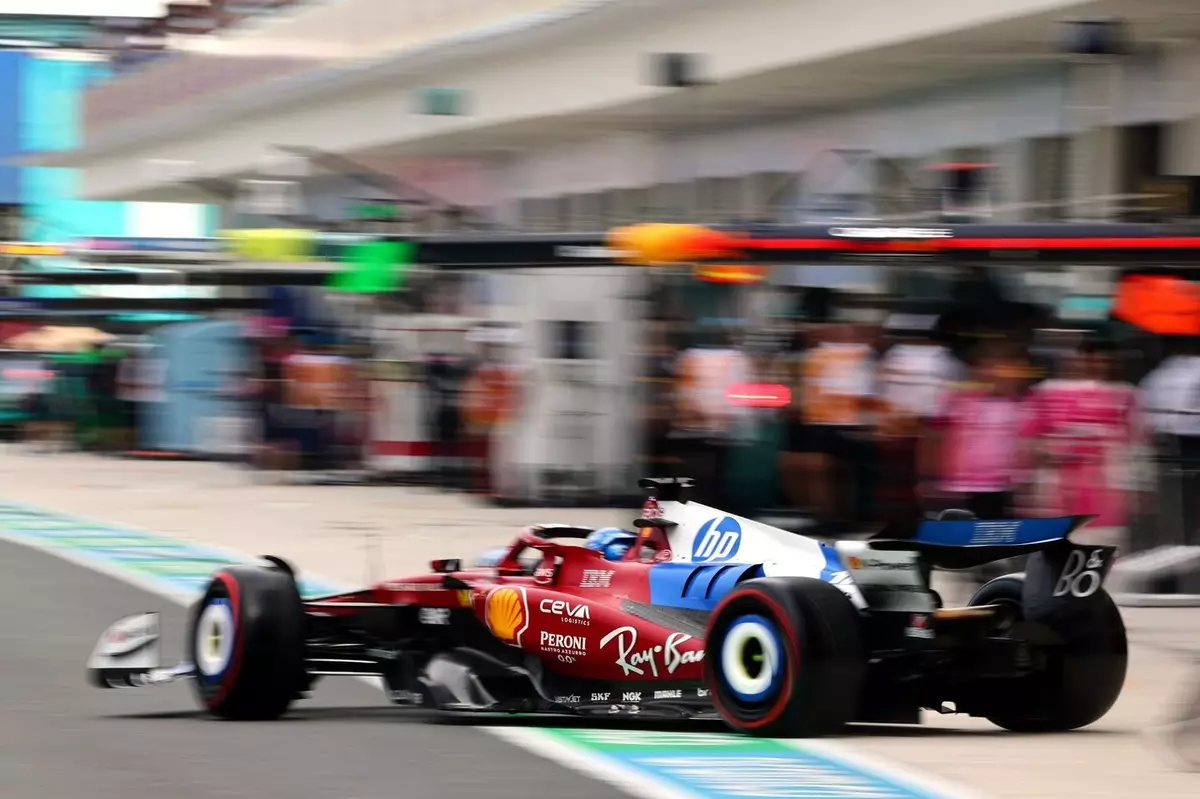In the high-stakes world of Formula 1, performance is not just an expectation—it’s a demand. Charles Leclerc’s recent outing in Miami epitomizes the struggles faced by Ferrari as they grapple with the underwhelming pace of their 2025 car. Despite Leclerc’s assertions that the team is maximizing the car’s potential, his qualifying result of eighth place was a stark reminder that optimized performance is futile without the inherent speed to back it up.
While it is commendable for Leclerc to find satisfaction in what he deemed a solid lap, it raises an alarming question: How can a driver feel content with a performance that lags so far behind the leaders? Leclerc’s frustration at being 0.550 seconds off Max Verstappen’s pole position underscores a deeper malaise at Ferrari, one that extends beyond just one weekend’s performance.
The Nature of Frustration
Leclerc’s experience in Miami illustrates a psychological landmine for drivers and teams alike. When every effort to enhance performance doesn’t yield corresponding results, it can breed both frustration and doubt. The underlying themes of disappointment at Ferrari echo through the paddock, especially when considering that competitors like McLaren and Red Bull showcase reliability combined with robust speed. Here lies Ferrari’s critical issue—despite possessing the tools and talent necessary for victory, they fall short in execution, a reality amplified on circuits heavy with slow-speed corners like the Miami International Autodrome.
Moreover, the reality of being outpaced by Williams, traditionally considered a lower-tier team, brings to light the volatility of performance in Formula 1. Leclerc’s acknowledgment that even a solid lap wasn’t enough to keep him above the Williams duo demonstrates how gaps in downforce and design can have catastrophic ripple effects across a race weekend.
Understanding the Crashes and Mistakes
The saga continued when Leclerc’s crash during his approach to the sprint race revealed a critical misjudgment. The choice to venture out on intermediate tires amid treacherous track conditions can be marked as a glaring error in judgment—one that has serious implications not only for Leclerc’s performance but for Ferrari as a whole. As he candidly admitted, the choice to run intermediates while facing standing water was a miscalculation that compounded the team’s woes, illuminating the precarious nature of racing where split-second decisions can dictate the outcome.
The aftermath of this incident did not just impose difficulties on Leclerc; it also placed added stress on the mechanics and engineers who had to rectify the fallout. Such a cascading effect exemplifies how issues on one front can devolve into broader team complications, thereby amplifying the pressure and urgency to find solutions—a sentiment Leclerc recognizes while still grappling with his car’s limitations.
The Competitive Landscape of Formula 1
As Formula 1 evolves, so too does the competitive landscape. The gap between the top-tier teams and those struggling at the back can be both wide and unforgiving. For Ferrari, it is a reminder that past glories can often be a distant memory; their steep trajectory to regain competitive stature is fraught with challenges. Leclerc’s acknowledgment of the deficiencies when compared to rivals demonstrates a stark realism that the team must address: a transformation towards improved aerodynamics and power unit efficiency is essential if they wish to compete effectively against the likes of McLaren and Mercedes.
It is this mounting urgency which raises the stakes for not only the team’s immediate performance in the 2025 season but also the long-term viability of their competitive edge in future seasons. While Leclerc and his teammates undoubtedly possess the skill and determination required in elite motorsport, they must bolster their machines to reclaim their status as frontrunners.
Ultimately, Ferrari stands at a crossroads: it is time for decisive actions, innovation, and re-strategizing to overcome the fundamental weaknesses that have taken root. As the world observes this storied team’s endeavors, the hope is not just to witness a revival but to relish the thrill of competition that Ferrari has historically epitomized in the exhilarating world of Formula 1.


Leave a Reply